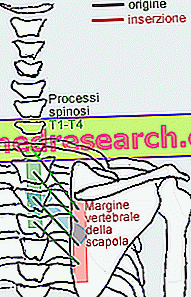Related articles: Omphaloceles
Definition
The defalocele is a serious congenital malformation, characterized by the protrusion of the abdominal viscera through a defect on the median line of the wall that normally contains them.
At the base of the navel, the herniated organs are covered by a thin membranous, translucent and avascular sac, internally formed by peritoneum and externally by amnios.
The dimensions of the cleft are variable: the omphalocele can be of small volume (if from a small hernia of the umbilical cord protrude only a few intestinal loops) or large, when it contains most of the abdominal organs, including intestine, stomach and liver. The immediate risks are infections of the peritoneal serosa and drying of the intestine, hypothermia and dehydration resulting from the evaporation of water from the viscera exposed.
In many cases, infants with omphalocele have other malformations, which include intestinal atresia, craniofacial changes, heart disease, renal anomalies and neural tube defects.
The defalocele originates from an abnormal closure of the abdominal wall in the embryo, at the umbilical region, before the ninth week of pregnancy. This malformation is more common in preterm infants and may be part of Beckwith-Wiedemann syndrome.
Furthermore, the defalocele can be related to chromosomal abnormalities, such as trisomy 21 (Down syndrome), trisomy 18 (Edwards syndrome) and trisomy 13 (Patau syndrome).
The defalocele and other associated anomalies can be identified through a routine prenatal ultrasound; the differential diagnosis arises with gastroschisis.
At birth, before the newborn is subjected to surgical treatment, the viscera exposed must be immediately covered with sterile gauze, not adherent and moistened to maintain sterility and avoid evaporation. The operation involves the closure of the umbilical defect and the repositioning of the viscera protruding inside the abdomen.
Possible Causes * of Omphalocele
- Down syndrome
- Trisomy 13
- Trisomy 18



